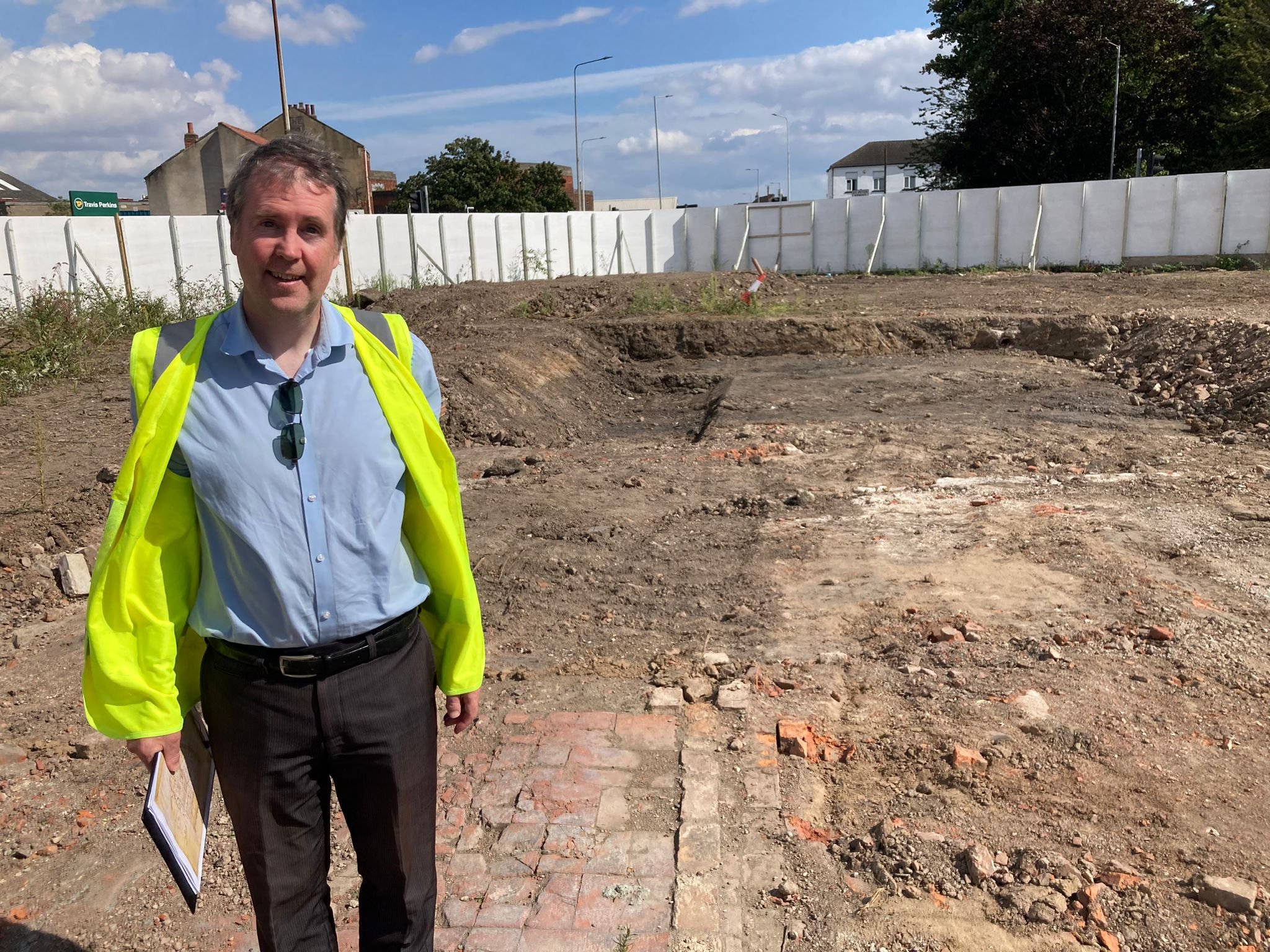‘It’s everyone’s history’: Volunteers dig 700 years into city’s past
By Angus Young
Over 700 years of history are set to be unearthed by members of the public from today in Hull.
Around 300 volunteers have signed up to take part in a community archaeology dig at the former Clarence Mill site next to the River Hull.
Expected to last six weeks, it will be the biggest archaeological event of its kind ever staged in the city.
Volunteers will work alongside a team from the Hull-based Humber Field Archaeology consultancy and a number of retired archaeologists to dig deep into the history of the ancient hamlet and parish of Drypool on the east bank of the river.
‘DEEPER UNDERSTANDING’: Peter Connelly, manager of Humber Field Archaeology
Last week, The Hull Story was given exclusive access to the site to get a tantalising glimpse of what lies beneath.
Already partially uncovered during an initial evaluation of the site carried out earlier this year is a road made up of granite stone setts marking out the route of Harcourt Street, along with strikingly well-preserved kerbstones.
The street’s name survives on a sign on a wall of the nearby derelict former Waterloo Tavern pub as does the footprint of the dozen terraced houses built along it in the mid-18th century.
A closer look where they once stood reveals an exposed section of tiled flooring in what had been a kitchen.
Each house had a backyard leading onto a narrow alleyway and then another row of slightly later much smaller homes, almost certainly with just one room downstairs and one above.
A quick stroll across their width from front to back takes just four strides.
While these two rows of houses will offer an insight into the start of Drypool’s incorporation into Hull, other areas of the site promise a journey much further back in time.
At the western end, experts from HFA are confident of uncovering the foundations of a huge wall which once connected a castle and blockhouses built in the 1540s on the order of King Henry VIII.
At the eastern end lies an even more tantalising prospect.
A partially-dug oval-shaped piece of land is where an ancient pond was maintained for the watering of animals. Easily identifiable on several historical maps, it is believed to date back to at least the 13th century and was only filled in around 1830 when it became an open square.
As such, it’s also likely to have been used as a dumping ground by generations of Drypool residents and workers in the area for more than four centuries.
Even with just a foot of earth removed from the surface, it’s easy to spot items literally sticking out of the ground once you’ve got your eye in.




In the space of two minutes, I found a teacup, several oyster shells, a clay pipe, a large animal bone and the remains of a leather shoe.
They all probably date from the Georgian era with anything lying underneath likely to be much older.
Elsewhere on the site, two small test pits dug earlier this year produced nothing but medieval fragments of pottery and other material.
All of which makes the next six weeks an exciting time for HFA manager Peter Connelly.
He said: “This is not just history for us archeologists, it’s everyone’s history.
“As well as the buildings we will be investigating, we will also be coming across personal objects that have been used, lost or just thrown away.
“They will provide us with a much deeper understanding of peoples’ lives and what they consumed through what they disposed of.
“For me, that’s very exciting and what makes it even more special is that ordinary people who have volunteered are going to make these finds.
“Our work here for the next couple of weeks is about looking at the past chapter of the site, but it’s also about helping shape a future chapter too because eventually this site is going to be developed for new housing and what we are about to discover will be covered over for a long time.
“As such, it’s an unique opportunity to investigate Drypool as it slowly developed through the centuries from being a tiny rural hamlet with just a handful of houses to being almost swallowed by Hull as the city and its docks expanded in the late 19th century.”
A number of public open days are being planned during the dig with dates to be announced in the coming weeks.
Become a Patron of The Hull Story. For just £2.50 a month you can help support this independent journalism project dedicated to Hull. Find out more here





